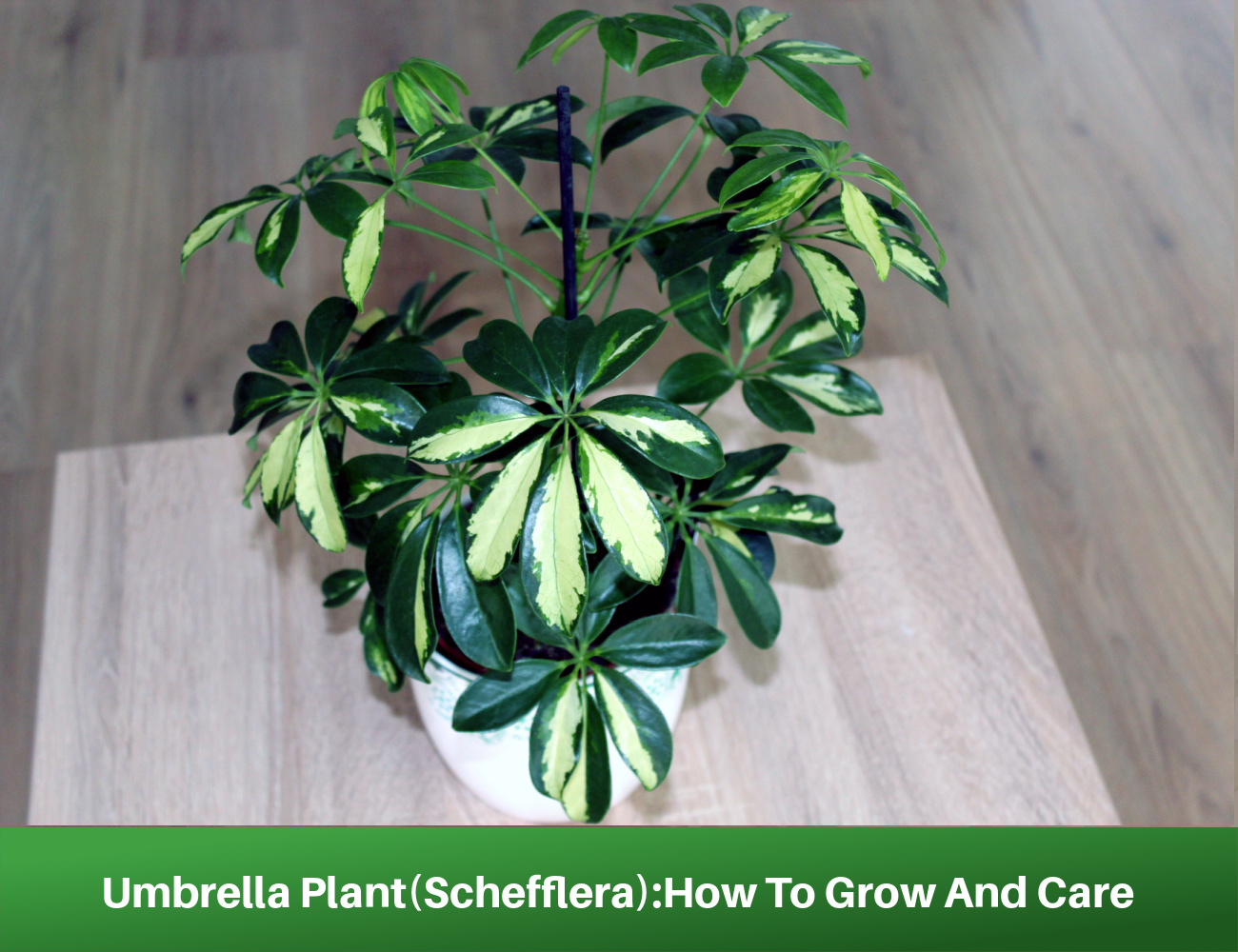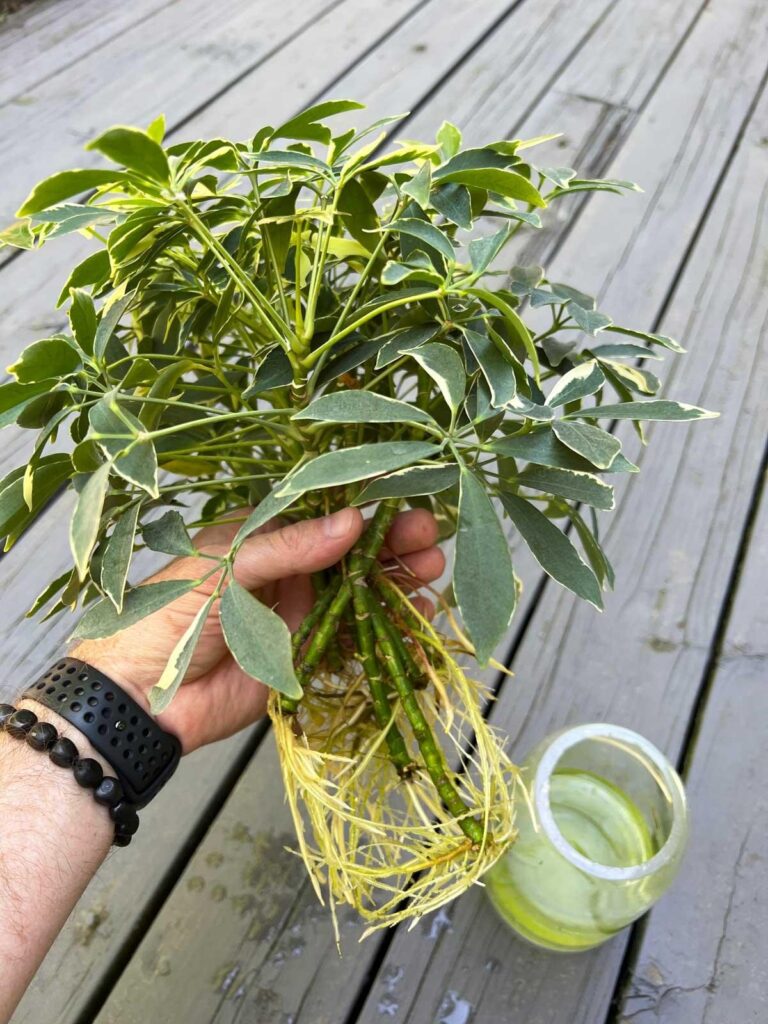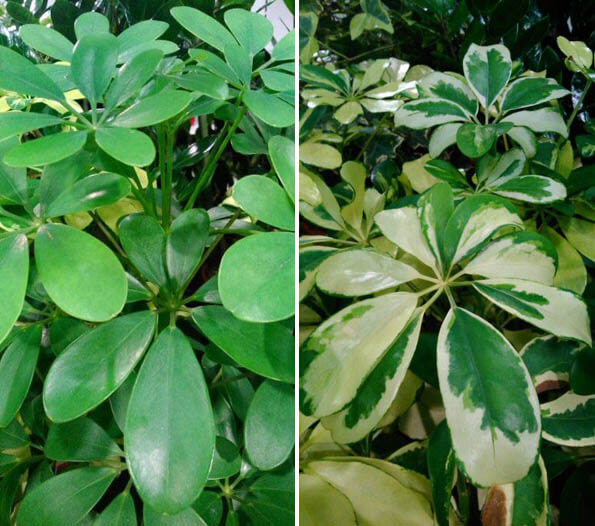Understanding the Unique Needs of Your Schefflera
The Schefflera, commonly known as the umbrella plant, is a popular and versatile houseplant that can thrive in a variety of environments. However, to ensure optimal growth and health, it’s essential to understand the unique needs of this plant. When learning how to take care of an umbrella plant, it’s crucial to recognize that Schefflera requires specific conditions to flourish.
Native to the tropical regions of Australia and New Guinea, the Schefflera has adapted to thrive in bright, indirect light and warm temperatures. In its natural habitat, the plant grows under the canopy of larger trees, where it receives dappled light and consistent moisture. To replicate these conditions indoors, place your Schefflera near an east- or west-facing window, and maintain a consistent temperature between 65°F to 75°F (18°C to 24°C).
Another critical aspect of Schefflera care is humidity. These plants prefer a relatively high humidity, typically above 50%. To maintain the optimal humidity level, you can place the plant on a tray filled with water and pebbles or use a humidifier nearby. By understanding and meeting these specific needs, you’ll be well on your way to creating an environment that allows your Schefflera to thrive.
By providing the right conditions, you’ll be able to enjoy the many benefits of having a Schefflera in your home or office. Not only do these plants purify the air and improve the aesthetic of a room, but they also have a calming effect on the mind and body. With proper care and attention, your Schefflera will become a beautiful and thriving addition to your space.
How to Provide the Perfect Environment for Your Umbrella Plant
When it comes to creating an ideal environment for your umbrella plant, there are several factors to consider. Lighting, temperature, and humidity all play a crucial role in determining the health and well-being of your Schefflera. By understanding how to provide the perfect environment, you’ll be well on your way to learning how to take care of an umbrella plant.
Lighting is one of the most critical factors in determining the health of your umbrella plant. Schefflera prefers bright, indirect light, but can tolerate low light conditions. Placing your plant near an east- or west-facing window is ideal, as it will receive gentle, indirect light. Avoid placing your plant in direct sunlight, as this can cause the leaves to become scorched and the plant to become stressed.
Temperature is another important factor to consider when creating an ideal environment for your umbrella plant. Schefflera prefers temperatures between 65°F to 75°F (18°C to 24°C), making it an ideal plant for indoor spaces. Avoid placing your plant near heating or cooling vents, fireplaces, or drafty windows, as this can cause the temperature to fluctuate and stress the plant.
Humidity is also an essential factor in determining the health of your umbrella plant. Schefflera prefers a relatively high humidity, typically above 50%. To maintain the optimal humidity level, you can place the plant on a tray filled with water and pebbles or use a humidifier nearby. This will help to create a microclimate that mimics the plant’s natural habitat.
By providing the perfect environment for your umbrella plant, you’ll be able to enjoy the many benefits of having a thriving Schefflera in your home or office. From air purification to aesthetic appeal, a well-cared-for umbrella plant can bring a touch of tropical beauty to any space.
Nourishing Your Umbrella Plant: A Guide to Fertilization and Watering
Proper fertilization and watering are essential for the health and well-being of your umbrella plant. When learning how to take care of an umbrella plant, it’s crucial to understand the importance of providing the right nutrients and hydration. By following a few simple guidelines, you can ensure your Schefflera receives the nourishment it needs to thrive.
Fertilization is a critical aspect of umbrella plant care. Feed your plant with a balanced, water-soluble fertilizer during the growing season (spring and summer). Dilute the fertilizer to half the recommended strength to avoid burning the roots. You can also use a fertilizer specifically formulated for tropical plants, as these products tend to have a higher phosphorus content, which promotes healthy root development.
Watering is another vital aspect of umbrella plant care. Over-watering is a common mistake that can lead to root rot and other problems. Check the soil moisture by sticking your finger into the soil up to the first knuckle. If the soil feels dry, it’s time to water. Water your plant thoroughly, allowing excess water to drain from the pot. Avoid getting water on the leaves or crown of the plant, as this can cause rot and other issues.
It’s also essential to understand the watering needs of your umbrella plant during different seasons. During the spring and summer, your plant will require more frequent watering due to increased growth. In the fall and winter, reduce watering to once a month, as the plant is dormant and requires less moisture.
By providing the right nutrients and hydration, you’ll be able to enjoy a thriving and healthy umbrella plant. Remember to monitor your plant’s response to fertilization and watering, and adjust your care routine accordingly. With proper nourishment, your Schefflera will reward you with beautiful, lush foliage and a robust growth habit.
Pruning and Training: Shaping Your Umbrella Plant for Optimal Growth
Pruning and training are essential techniques for maintaining the health and appearance of your umbrella plant. By learning how to prune and train your Schefflera, you’ll be able to encourage bushy growth, prevent legginess, and promote a robust root system. When it comes to how to take care of an umbrella plant, pruning and training are critical components of a comprehensive care routine.
Pruning involves removing dead, diseased, or damaged leaves and stems to maintain the plant’s overall health and appearance. Use a pair of clean, sharp scissors or pruning shears to remove any unsightly growth. Cut back leggy stems to encourage branching and promote a fuller plant. You can also prune your umbrella plant to maintain a desired shape or size.
Training involves providing support for the plant as it grows. Umbrella plants can grow quite tall, so it’s essential to provide a stake or trellis to keep the plant upright and promote vertical growth. You can also train your umbrella plant to grow in a specific direction by gently twining the stems around the stake or trellis.
Regular pruning and training will help maintain your umbrella plant’s natural shape and promote healthy growth. By removing dead or damaged growth, you’ll prevent the spread of disease and encourage the plant to focus its energy on producing new, healthy growth. With regular pruning and training, your Schefflera will thrive and become a stunning addition to your home or office.
Some additional tips to keep in mind when pruning and training your umbrella plant include: pruning during the spring and summer months when the plant is actively growing, using a well-balanced fertilizer to promote healthy growth, and providing adequate humidity to prevent stress and promote healthy development.
Pest Control and Common Problems: Troubleshooting Your Umbrella Plant
Despite their hardiness, umbrella plants can be susceptible to pests and diseases. When learning how to take care of an umbrella plant, it’s essential to be aware of the common problems that can affect these plants. By identifying and addressing these issues promptly, you can prevent them from becoming severe and causing damage to your plant.
Spider mites are one of the most common pests that can affect umbrella plants. These tiny, spider-like insects feed on the plant’s sap, causing yellowing or bronzing of the leaves. To control spider mites, use a gentle insecticidal soap or neem oil, and increase the humidity around the plant to prevent the mites from thriving.
Mealybugs are another common pest that can infest umbrella plants. These small, white insects secrete a sticky substance called honeydew, which can attract ants and promote the growth of sooty mold. To control mealybugs, use a systemic insecticide or insecticidal soap, and isolate the plant to prevent the infestation from spreading.
Root rot is a common problem that can affect umbrella plants, particularly if the soil is too wet or the plant is exposed to extreme temperatures. To prevent root rot, ensure the soil drains well, and avoid over-watering. If you suspect root rot, repot the plant in fresh, well-draining soil, and prune any affected roots.
Other common problems that can affect umbrella plants include leaf drop, leaf scorch, and nutrient deficiencies. To address these issues, adjust the plant’s environment, fertilize regularly, and prune the plant to maintain its shape and promote healthy growth.
By being aware of the common pests and problems that can affect umbrella plants, you can take proactive steps to prevent them from occurring. Regular monitoring and maintenance can help prevent infestations and diseases, ensuring your umbrella plant remains healthy and thriving.
Repotting and Propagation: Giving Your Umbrella Plant a Fresh Start
As your umbrella plant grows and thrives, it may eventually outgrow its container. When this happens, it’s time to repot your plant into a larger pot with fresh soil. Repotting is a great opportunity to give your plant a fresh start and provide it with the nutrients it needs to continue growing. When learning how to take care of an umbrella plant, repotting is an essential skill to master.
To repot your umbrella plant, start by choosing a pot that is only slightly larger than the original one. This will prevent the soil from becoming too wet and reduce the risk of root rot. Next, select a well-draining potting mix that is specifically designed for tropical plants like umbrella plants.
When repotting, gently remove the plant from its container and inspect the roots. If the roots have become pot-bound, use a fork to gently tease them apart. Then, place the plant in its new pot and add fresh soil, making sure to leave enough space for proper drainage.
Propagation is another way to give your umbrella plant a fresh start. By propagating new plants from stem cuttings or division, you can share your plant with friends and family or create new plants for your own collection. To propagate an umbrella plant, start by taking 4-6 inch stem cuttings from the tips of the branches. Remove any lower leaves and place the cuttings in a pot filled with moistened potting mix. Keep the soil consistently moist and warm until roots develop.
Division is another method of propagation that involves separating the roots of a mature plant to create new plants. To divide an umbrella plant, start by removing the plant from its container and gently separating the roots. Then, replant the separated roots in new pots filled with fresh soil, making sure to water thoroughly.
By repotting and propagating your umbrella plant, you can give it a fresh start and provide it with the nutrients it needs to continue growing. With proper care and attention, your umbrella plant will thrive and become a stunning addition to your home or office.
Common Varieties of Umbrella Plants: Choosing the Right One for You
While the term “umbrella plant” is often used to refer to the Schefflera genus as a whole, there are several different species and varieties within this group. Each of these varieties has its own unique characteristics and growth habits, making some better suited to certain environments and care levels than others. When learning how to take care of an umbrella plant, it’s essential to understand the different varieties and their specific needs.
Schefflera actinophylla is one of the most common varieties of umbrella plants. This species is known for its large, umbrella-like leaves and can grow up to 8 feet tall in ideal conditions. Schefflera actinophylla prefers bright, indirect light and consistent moisture, making it a great choice for rooms with east- or west-facing windows.
Schefflera arboricola is another popular variety of umbrella plant. This species is known for its smaller, more compact growth habit and is often used as a bonsai tree. Schefflera arboricola prefers bright, indirect light and consistent moisture, making it a great choice for rooms with south-facing windows.
Other varieties of umbrella plants include Schefflera rhododendrifolia, Schefflera delavayi, and Schefflera taiwaniana. Each of these varieties has its own unique characteristics and growth habits, making them better suited to certain environments and care levels than others.
When choosing an umbrella plant variety, consider the specific conditions of your home or office. If you have a room with bright, indirect light and consistent moisture, Schefflera actinophylla may be a great choice. If you have a room with limited light and prefer a more compact growth habit, Schefflera arboricola may be a better option.
By understanding the different varieties of umbrella plants and their specific needs, you can choose the right one for your home or office and provide it with the best possible care.
Conclusion: Enjoying the Beauty and Benefits of Your Thriving Umbrella Plant
By following the guidelines outlined in this article, you’ll be well on your way to becoming an expert in how to take care of an umbrella plant. With proper care and attention, your Schefflera will thrive and provide you with years of beauty and enjoyment.
Remember to provide your umbrella plant with the right environment, including bright, indirect light and consistent moisture. Fertilize regularly and prune your plant to maintain its shape and promote healthy growth.
By understanding the unique needs of your umbrella plant, you’ll be able to provide it with the best possible care. Whether you’re a seasoned plant enthusiast or just starting out, with the right knowledge and attention, you can enjoy the beauty and benefits of a thriving umbrella plant.
So why not give your umbrella plant the care it deserves? With a little patience and attention, you can enjoy the many benefits of this beautiful and versatile plant. From air purification to aesthetic appeal, a well-cared-for umbrella plant can bring a touch of tropical beauty to any room.
By following the tips and guidelines outlined in this article, you’ll be able to enjoy the beauty and benefits of your umbrella plant for years to come. Happy planting!







